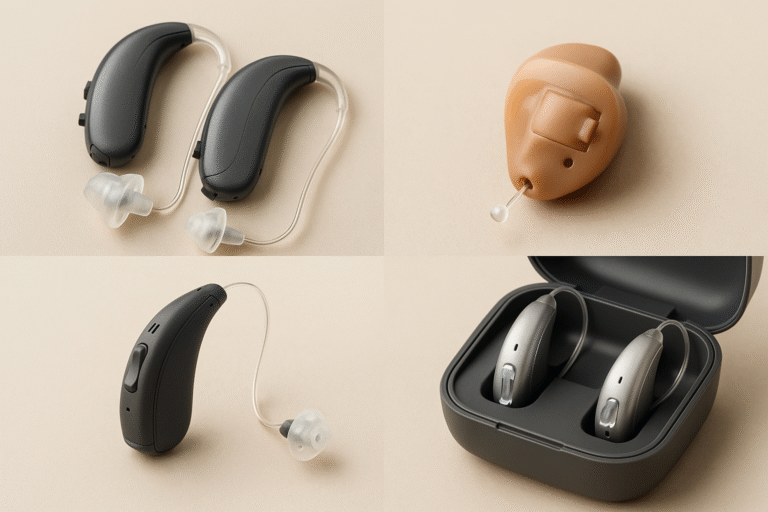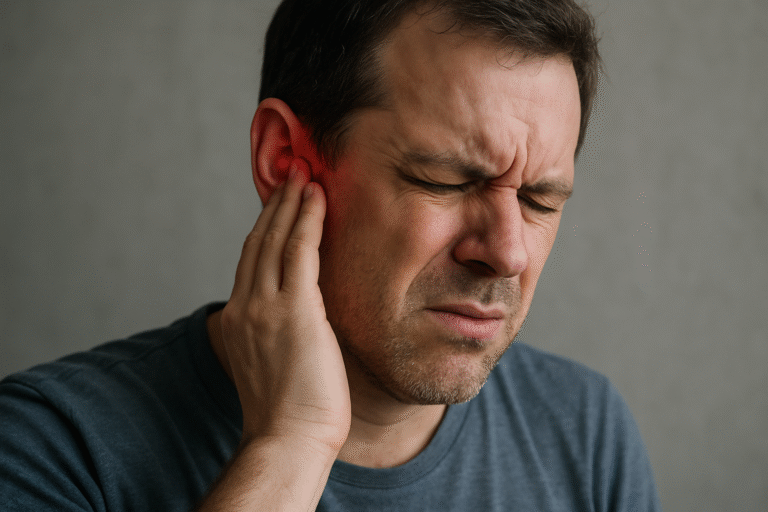Ear wax is something we all have, and actually need to protect our ears by trapping dirt, dust, and even small bugs. It also keeps the inside of your ears clean and moisturised. But sometimes, ear wax builds up too much and causes problems like muffled hearing, itching, ringing in the ears, or even pain.
Because of that, some people wonder, “what’s the best way to remove ear wax?”
Is it okay to do it yourself, or see a professional? Let’s take a look at the pros and cons of ear wax removal at home versus visiting an ear wax removal clinic. You will also learn when it’s time to see an ear wax removal doctor for safe care.
Why Do We Have Ear Wax?
Before we talk about removal, it helps to know what ear wax actually does. Ear wax is also called cerumen, which is made naturally by our body. Having ear wax is normal and healthy as it’s your ear’s way of cleaning and protecting itself from particles that may harm you.
Here are the purposes of our ear wax:
- Traps dust and particles
- Protects the skin inside your ears
- Helps prevent infections
- Moves naturally toward the ear opening to fall out or be washed away
In most cases, you don’t need to do anything about them. But when wax builds up or hardens, it can block your ear canal, which some people may feel temporary hearing loss, earache, dizziness, a feeling of fullness or even tinnitus. When that happens, that’s when ear wax removal may be needed.
Signs You May Have a Wax Buildup
Not all ear wax needs to be removed from your ears, but when it becomes troublesome, that’s when you need to have action. Here are some common signs that it might be time to take action:
- Feeling like your ear is blocked
- Trouble hearing in one or both ears
- Earache or a full sensation
- Ringing or buzzing (tinnitus)
- Itchiness or discharge
- Dizziness or balance issues
If you’re experiencing any of these, it’s worth looking into safe ear wax removal options around your area.
Ear Wax Removal at Home: What You Should Know
Many people try ear wax removal at home first. However, while there are products and methods that can work, they still have to be used with care.
Common Home Methods:
- Ear drops or oil
Over-the-counter drops or olive oil can soften the wax, helping it move out naturally. - Warm water rinse
Using a bulb syringe to gently rinse the ear with warm water after using drops. - Avoid using cotton buds (Q-tips)
Cotton buds are commonly presented as ear cleaning tools. However, using them is discouraged by professionals, as these can push the wax deeper and damage your ear canal or eardrum.
If you must, cotton buds can be used only on the outer parts of your ears, but never on your ear canal to avoid risks of damage.
Pros of Home Removal:
- Convenient and low-cost
- May work well for mild blockages
- Easy to find products at pharmacies
Cons of Home Removal:
- Can make things worse if done incorrectly
- May not work on hardened or deep wax
- Risk of pushing wax deeper or hurting your ear
- Not suitable for people with ear infections, tubes, or eardrum issues
If you’re unsure or nervous about doing it yourself, it’s better and safer to visit an ear wax removal clinic.
In-Clinic Ear Wax Removal: What to Expect
When home methods don’t work, or if you want expert care, you can visit a professional ear wax removal clinic to help you remove ear wax. Places like Audience Hearing have trained clinicians who use safe tools and techniques to remove wax without harming your ears.
Methods Used in Clinics:
- Microsuction
This is the most common and safest method to remove ear wax. Using a tiny suction device and magnification, your specialist may be able to see clearly inside your ear and take up ear wax that has built up. - Curette (manual removal)
Curette is done using a small tool to gently scoop out the wax while being guided with a light or scope.
Benefits of Seeing an Ear Wax Removal Specialist:
- Safe and precise removal
- Results are often noticeable right after the removal
- Audiologists or trained practitioners don’t have to guess, as they know what’s safe for your ear type
- Useful if you have hearing aids—as wax buildup can affect device performance
When In-Clinic Removal Is Recommended
Here are the signs that an in-clinic removal may be helpful:
- You’ve tried drops, but the wax won’t budge
- You use hearing aids
- You’ve had ear surgery or eardrum issues
- You experience pain or repeated blockages
- You prefer safe ear wax removal by a trained professional
Should You Remove Ear Wax at Home or In-Clinic?
The answer depends on your situation. If you only have a mild blockage, and no history of ear problems, trying ear wax removal at home with drops may be fine.
But if you’re not sure, or if the symptoms are bothering you, visiting a professional ear wax removal clinic is often the better choice to have a professional remove it for you, and may help you address other audiological concerts early.
If ever you’re in NSW and you are considering ear wax removal, Audience Hearing is here to help you with your concerns. Schedule a consultation for your next in-clinic ear wax removal to have a qualified practitioner guide you.



